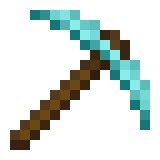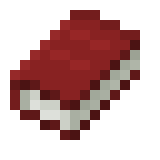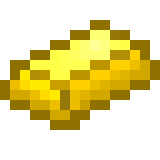Reviewer: John BDeveloper: IronOak GamesPublisher: Curve DigitalCategory: Strategy, Multiplayer, Role-Playing
Release Date: 04.04.19Price (At Time of Review): $24.99 Digital | $34.99 Physical – Regular | £39.99 – SE
Buy For the King digitally in the Nintendo Switch eShop here.
Buy For the King physically on Amazon here.
Buy For the King Signature Edition physically here.
Growing up, the closest I ever got to getting into tabletop gaming was Baldur’s Gate. My family played cards more than we played board games, and my friends all had Sega, Nintendo, or Sony consoles (Microsoft didn’t have a console until high school was almost over). So I have no great love for tabletop-inspired games. Not saying they’re bad, I just have don’t have any heavy nostalgia for them to help me paper over the flaws I might find. For the King – developed by IronOak Games and published by Curve Digital – manages to ameliorate my lack of nostalgia by linking a tabletop pedigree with some of my favorite video game mechanics; namely, hex grid maps and turn-based combat. The basic game system is great for a deep, strategic RPG adventure, and that’s what For the King delivers. The game is a port from a game previously released on Steam, but that’s fine because it just means that all of the DLC is included from the start on the Switch.

The King is Dead – Shouldn’t We Be Doing This For the Queen?
The main campaign from the regular game is fairly simple. The game world follows a simple outline of quests every time you play, but the world map is generated randomly every time you start a new game – and you’ll most likely need to start a few. The first screen you see tells you not to get discouraged if you die since it happens all the time… which is not a great first impression, but at least they’re honest. Basically, the king has been killed and the queen has encouraged everyone in the kingdom to take up arms to find his killer and investigate the source of the chaos energy running rampant through the countryside. It’s a pretty barebones story that introduces you to a number of guide characters along the way, but none of them come across as especially memorable. Your characters are cyphers; they have no dialogue or any kind of personality, so it’s not like they have any deep arcs in which to invest yourself. The story only exists to set up the adventuring, which is fine. I do prefer a good story to go along with a game, but as long as the rest of the game is fun I don’t worry about it too much.

The Kingdom of Fahrul
When you start a game, you get to pick up to three characters to control. They inhabit a hex grid world, and move around it in turns. I haven’t found a way to change the order in which your characters can act during a turn. Player 1 always acts first, Player 2 second, and Player 3 third. Moving around the map – and, in fact, every action you take during the game – is dependent on a skill check. Every action has a number of rolls that must be made using a particular stat. For instance, at the beginning of every character’s turn, they roll five times to determine how far they can move. If you pass all five rolls, you can move up to four hexes; passing four gives you a range of four, etc. It’s an interesting system, but it has certain drawbacks. Right from the get-go, if your characters are moving different distances, they may not be close enough to join a fight if one of your other characters is ambushed. It corresponds to rolling dice like in a tabletop game, which is fine, but I would have preferred if certain things – most importantly movement – were a fixed quantity instead of a random probability. There are certain actions that can be turned in your favor by using your characters’ focus points. Basically, spending a focus points guarantees one successful roll.
The world map is populated by lots of different things to explore, fight, or plunder. Some hexes contain towns, where you can buy healing services to get rid of negative status effects or replenish health. You can also buy new weapons, armor, and items as well as take on side quests for additional experience. They’re fairly typical quest types, including fetch quests, hunt quests, and delivery quests. You’ll also come across enemies to fight for experience and treasure, but I’ll get back to the combat later. There are some statues and shrines littered about that provide stat bonuses or free experience. Sometimes you’ll come across a dungeon; story-based dungeons tend to be way longer than random bonus dungeons, but both types have tons of treasure and difficult enemies. Finally, as you wander around the map you’ll be blessed or plagued by numerous random encounters. They’re usually accompanied by skill checks; for instance, if you come across a field of flowers, you’ll have to pass an awareness check to see if you can find the special herb located there. If you fail the test, you’ll get penalized. Sometimes the penalty is just that you get nothing; more often, the penalty involves something more serious like losing a turn or getting poisoned. But not every random encounter requires a check; sometimes you just come across a wandering merchant or a dead adventurer to loot.

Mastering Dungeons
Getting back to the dungeons real quick, they’re a little disappointing if you’re looking for some hardcore dungeon crawling. First of all, they can’t really be interrupted if you get in over your head. There are some scrolls to teleport out if you need to, but otherwise once you start you can’t choose to leave. That was a little disappointing all its own; make sure you bring a lot of healing items with you, as health is hard to come by and dungeon enemies seem to cast status effect-inducing attacks more often than the world map enemies. The most disappointing thing, though, is that you don’t really explore dungeons.
Dungeons are just a series of rooms that you progress through pretty much automatically after clearing the challenge presented. Most of the time the challenge will be a fight against a group of enemies. Sometimes there will be a trap to circumvent or disarm; both of those things require passing a skill check, though. Interspersed throughout the fight and trap rooms are treasure chests, healing wells, and empty rooms where you can set up camp and rest if you have the right items. Dungeons do a good job of showcasing For the King’s combat system and the skill check system, but I can’t help but feel a little let down by the fact that you don’t actually do any dungeon crawling or exploration of your own. The straight line approach the game takes lacks depth and limits the game’s sense of adventure.

Fight as One! Or Maybe Not
The combat system will be familiar to fans of classic Final Fantasy games, but it has its own twist. It’s turn-based like SquareSoft’s legendary series; it most closely resembles FFX in execution. Turn order is displayed across the top of the battle screen, and you and your enemies take turns taking actions according to that order. In a unique twist, your attacks and abilities are not determined by your character, but rather by your weapons. Each weapon has a basic attack and up to three special attacks. It’s a pretty fascinating way to set things up; sometimes it’s a better idea to stay with a weaker weapon because it has good abilities that you don’t want to lose. Alternatively, if you decide to switch up your weapons a lot, this system requires you to rework your strategy every time you upgrade equipment. If you’re a big fan of strategizing and character management, the weapon-based skill system provides plenty of opportunity to flex your mental muscles.
Like every other action in the game, attacking also requires a skill check. This adds another dimension to choosing your equipment. You have to keep track of a character’s stats to determine what weapon to equip. Equipping a weapon that checks against strength on a character with low strength will mean that no matter how good the weapon is, you’ll hardly ever see the benefits. This often led me to give up on weapons with great skills, simply because none of my characters could use it efficiently. The skill check to determine attacks is not all-or-nothing; each weapon has a number of rolls associated with it, and each roll determines an equal portion of the damage. If your weapon has four rolls, and you pass three and fail one, you will do 75% of the weapon’s max damage. If your stats are too low for a weapon, you will almost always fail enough rolls that you end up wasting most of a weapon’s potential.
When battle starts, your battle party is determined by how close each of your characters are to each other. Only characters within two hexes of the character initiating the combat will be allowed to fight. Enemies also have an ally range, which is generally much larger than yours. If you attack an enemy with another enemy in range, you’ll have to fight that enemy and up to two of its friends. Before you fight, if you are the one to initiate combat, certain character classes have the option to either ambush your foes or sneak past them. Ambushing an enemy means it doesn’t get to call any friends in, if it has any in range, and gives the ambushing character a free attack at the start of combat. Sneaking past an enemy just allows you to move to the hex on the other side of the enemy. Both ambushing and sneaking require skill checks to pass; failing them will start combat immediately, and give your enemies a free shot at you in the process.

Inventive Inventory
The inventory system is a little confusing at first; it’s made worse by the fact that the tutorial is weirdly implemented. There’s an encyclopedia to check in the menu, but mostly the tutorial screen only automatically pops up when you encounter something for the first time, except the inventory. The layout of the inventory screen is clearly made for a mouse input, which makes sense given the game’s PC heritage. Cycling through your options is a little confusing at first, even though it seems like it shouldn’t be. You can only interact with the highlighted item, but cycling through them can be confusing because the highlighted shade isn’t bright enough or the box is too small to see what is highlighted.
Once you get the hang of things, though, everything makes sense. You can trade items between characters if they inhabit the same hex. There are six different tabs in your inventory; show all, weapons, armor, herbs, scrolls, and key items. Using or equipping items works like it does everywhere; pick the item and select “use” or “equip” from the menu that pops up. Healing herbs are used in a pipe your character possesses; different pipes up the effectiveness of herbs. It took me until my second playthrough to realize this. Again, the tutorial never really mentioned it. I happened to notice it myself in a shop. Part of that is my fault; I was so focused on weapons and herbs that I didn’t properly check the descriptions in the store’s inventory. Still, it’s a fairly important ability for your characters that I wish had been highlighted more clearly.

Explore the Lore
As you beat bosses and clear dungeons, your characters will find lore books that unlock lore points. You use lore points to unlock new special encounters, items, and character classes from the main menu. It took me a while to figure out they could only be used in the main menu; it was not clear in their encyclopedia entry that they could only be used from the main menu. The books do not show up in your characters’ inventories, so I was confused for a while until I booted up the game for a second time and saw the notification.
New Old Graphics
For the King’s graphics are pretty decent; the game’s visuals look like a high-def version of the N64’s graphics. Character models and background objects are well-designed and generally have a cool, if a little generic, medieval fantasy look. The game’s animations are relatively smooth, but the game lags pretty frequently when entering and exiting fights, dungeons, and transitioning between your characters’ turns. It’s not a game breaker, but it was annoying. Moreover, the game’s text was really small on the Switch’s handheld mode. For a game so dependent on text, this is a pretty big problem. The music is fairly generic medieval stuff. It uses lots of lutes and drums. It sounds good, though, and establishes the medieval setting. There is some minor voice acting, but it consists entirely of grunts when you get hit.

For the Queen Because She’s Still Alive!
For the King has its ups and downs, but I generally feel that the positives outweigh the negatives. It offers an interesting weapon-based skill system, a challenging, consistent battle system, and plenty of sweet, sweet loot. The graphics and music are decidedly medieval, which has been done to death in the fantasy genre, but the game still looks and sounds good. It has some problems with lag at times, the tutorials could be a little clearer, and dungeon crawling lacks an exploration element, but overall I had a great time in the kingdom of Fahrul.
Score: 7.5/10
Buy For the King digitally in the Nintendo Switch eShop here.
Buy For the King physically on Amazon here.
Buy For the King Signature Edition physically here.
Follow IronOak Games
Follow Curve Digital
*Review Code Provided by Indigo Pearl
Categories
Recent Posts
Tags
#Broforce #dev #DRIVE #FE #indie #indies #Kickstarter #kickstarter #Minit #nindies #Nindies #Nintendo #NintendoSwitch #Owlboy #RaceDieRun #Switch #SwitchCommunity #switchcorps #SwitchCorps #SwitchCorps #Switchiversary #SwitchLewd #SwitchLewds #Switchruary #Twitch #videogames #VitaIsland #YouTube




Leave a Reply